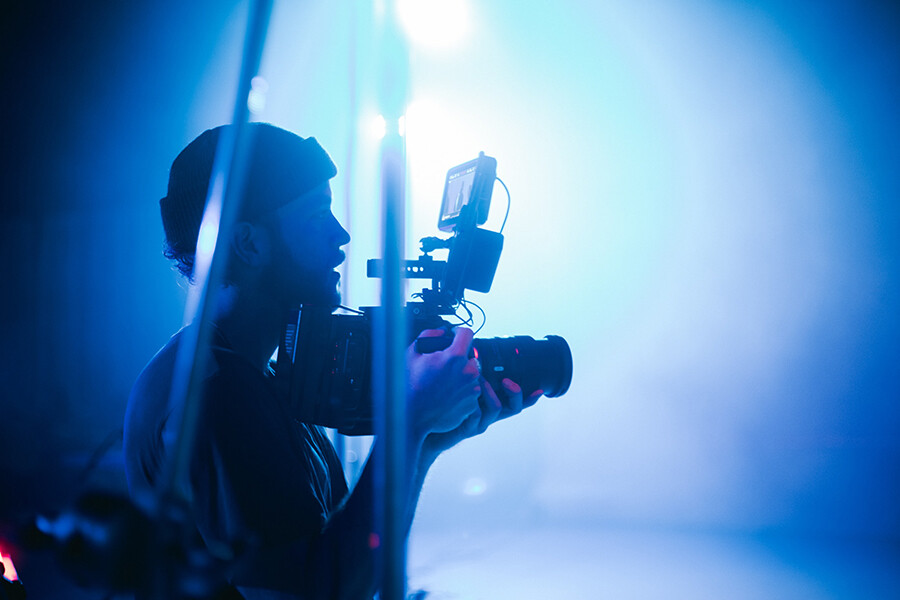- Accueil
- La recherche
- Mémoires et Travaux de fin d’études
- La répartition des tâches dans les métiers du son et du cinéma
La répartition des tâches dans les métiers du son et du cinéma
Auteur : Matéo ROUSSON
Directeur(s) de mémoire : John Lvoff & Ken Yasumoto
Son
Résumé : Les métiers du son au cinéma semblent bien différenciés, la répartition des tâches est clairement définie par la Convention collective du cinéma. Pourtant,
ces métiers sont aussi interdépendants, car s’étant constitués par étapes successives définies par des techniques et des opérations, ils sont reliés par un
objet commun : la bande son.
Récemment, le numérique change l’approche des métiers du son, tant dans les techniques que dans la méthodologie.
Les outils de captation et de manipulation du son se ressemblent de plus en plus au point que l’ordinateur est omniprésent dans la chaîne de travail. Si les outils ne catégorisent plus les étapes de la construction de la bande sonore, qu’est ce qui fait la différence entre les métiers du son?
Il apparaît désormais la possibilité de choisir une manière de s’organiser spécifique à un projet. Mais l’industrie de cinéma possède ses propres demandes.
La méthode de travail est de plus en plus importante, décisive, dans une cohérence des métiers par rapport à leur objectif.
Nous partons de l’hypothèse que la méthode de travail va changer l’approche des professionnels à la bande son d’un film et que cette méthode peut être définie par la répartition des tâches.
C’est sous cet angle de la répartition des tâches que ce mémoire propose de faire un état des lieux de la situation actuelle des métiers du son au cinéma en France, puis d’étudier des pistes d’ouverture à travers la méthode américaine et les nouveaux dispositifs de son, dit son 3D.
Nous ouvrirons la réflexion sur la possibilité de considérer le travail de la bande son comme un travail autonome, lié au son lui-même comme vecteur de sentiments, et transversal aux formes artistiques.
A travers un travail de recherche à partir d’entretiens, nous essaierons de trouver une méthode de travail intéressante et l’appliquerons à un cas concret dans l’expérience d’un court métrage.
L’objectif principal de ce mémoire est de comprendre l’organisation actuelle des métiers du son au cinéma afin de définir des compétences spécifiques à un métier spécialisé dans la cohérence de la bande son
—
Abstract: The cinema sound professions seem to be well differentiated, the distribution of tasks is clearly defined by the collective cinema agreement. However, these
professions are also interdependent, because being constituted by successive stages defined by techniques and operations, they are linked by a common object: the soundtrack.
Recently, digital technology has changed the approach to sound professions, both in techniques and in methodology.
The tools for capturing and manipulating sound are increasingly similar to the point that the computer is omnipresent in the work chain. If the tools no
longer categorize the stages in the construction of the soundtrack, what makes the difference between the sound professions?
There now appears the possibility of choosing a way of organizing yourself specific to a project. But the movie industry has its own demands.
The working method is more and more important, decisive, in a coherence of the trades in relation to their objective.
We start from the hypothesis that the working method will change the approach of professionals to the soundtrack of a film and that this method can be defined by the division of labor.
It is from this angle of the distribution of tasks that this thesis proposes to make an inventory of the current situation of the sound professions in cinema in France, then to study avenues of opening through the American method and new sound devices, says 3D sound.
We will open the reflection on the possibility of considering the work of the soundtrack as an autonomous work, linked to the sound itself as a vector of feelings, and transversal to artistic forms.
Through research work based on interviews, we will try to find an interesting working method and apply it to a concrete case in the experience of a short
film.
The main objective of this dissertation is to understand the current organization of sound professions in cinema in order to define specific skills for a profession specializing in soundtrack consistency.



